NVIDIA Tegra Note 7 Review
by Brian Klug on November 12, 2013 9:01 AM EST- Posted in
- Tablets
- Mobile
- Tegra 4
- NVIDIA
- Tegra Note
Battery Life
Battery life is still a big concern for mobile devices, and remains a regular emphasis in our reviews. The Tegra Note 7 ships with a 15.17 watt hour battery, essentially par for the course in the 7-inch tablet space it occupies. As a reminder, Tegra 4 consists of 5 ARM Cortex A15s, 4 synthesized for performance, 1 shadow or “energy saver” core synthesized for lower power and lower frequency. In the case of the Tegra 4 SoC inside Tegra Note, the shadow core seems to work up to a frequency of 696 MHz. The Tegra Note 7 includes an interesting setting which allows one to configure between a high performance, balance, and power saver mode. I’ve been begging OEMs for something like this for a while now, with granular control of the governor for CPU and other power/performance settings without the need for root. Right in the settings shade there’s a shortcut to these settings, with balance selected as default.
Major kudos to NVIDIA for shipping something so close to what I’ve been asking for, something which by the way is the long term solution to the “performance mode” CPU optimizations we’ve been talking about for so long now, which the Tegra Note does not exhibit any symptoms of having. Balance doesn’t limit frequency and sets the max number of cores to 4, save battery sets the maximum number of cores to 2 and a frequency limit of 1.8 GHz (which oddly enough already is the limit of this platform) along with an app FPS limit of 30. I didn’t notice any change with maximize performance selected, and oddly enough the 60 FPS limit due to vsync remained in place.
We’ll start with our typical WiFi web browsing battery life test. Here we see a good combination of regular spikes in CPU usage with idle time, hopefully simulating constant, reasonably paced usage. As always the display is set to exactly 200 nits and configured the same way we always configure devices for maximum consistency.
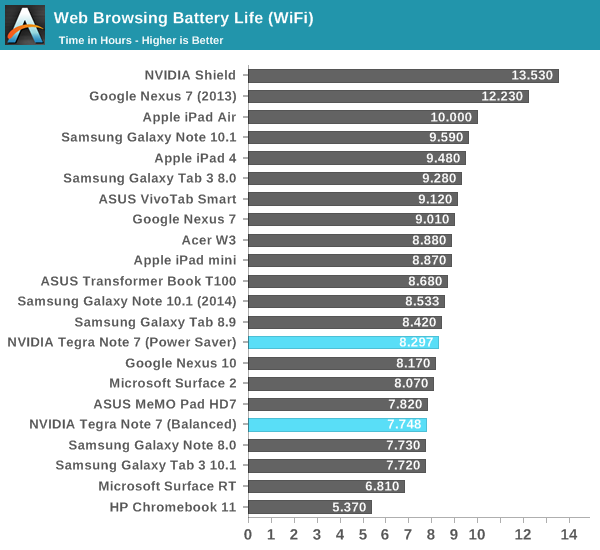
I tested the WiFi browsing battery life in both the power saver and balanced mode since the web browsing test has a good CPU workload mix that would flesh out a difference. There ends up being a 7 percent difference in battery life between the two here. I suspect NVIDIA could set the CPU maximum frequency a bit lower without trading off much real world performance, although the big consumer really is display. Unfortunately compared to the Nexus 7 (2013) the Tegra Note lasts quite a bit less on battery.
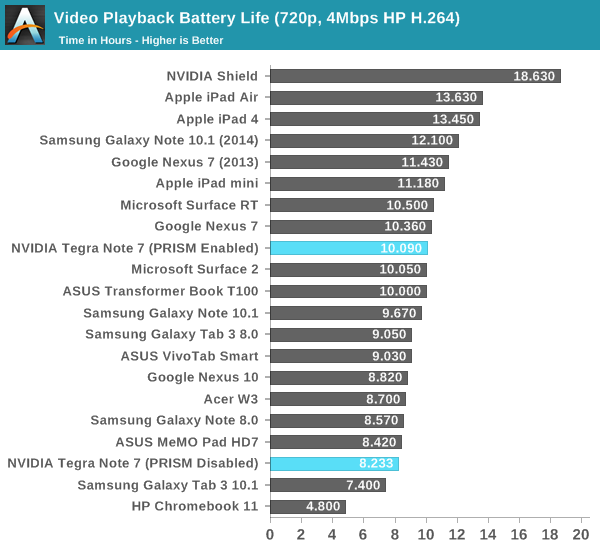
Our video playback test is unchanged and consists of a 720p H.264 high profile Blu-ray transcode played over and over. Here the Tegra Note surprisingly enough also isn’t able to push out much further, in spite of a workload that should pretty much be entirely shadow core (the +1 energy saver core) and video decode dominated. The fact that WiFi web browsing and video playback times are so close together makes me suspect the majority contributor to battery drain in the Tegra Note is display.
Update: I originally tested video playback with NVIDIA's PRISM dynamic backlight feature disabled since this was turned off for display testing. With it enabled and the display set again to 200 nits the Tegra Note is able to almost precisely nail the 10 hour video playback time that NVIDIA claimed, a much better result.
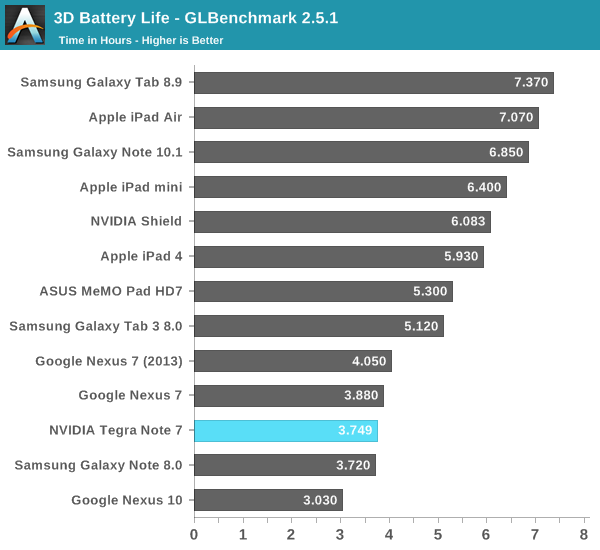
I also ran the Tegra Note through our 3D battery life test which is a part of GLBenchmark. Here the Tegra Note performs very close to the current and previous generation Nexus 7.
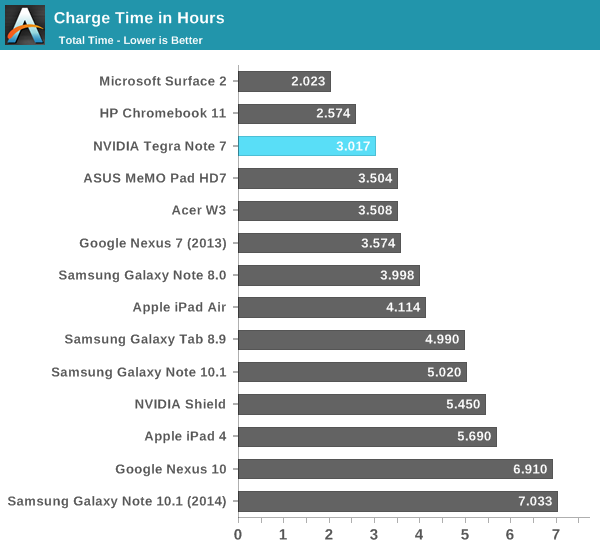
Finally I tested charge time on the Tegra Note, which utilizes the same charging signaling and charger as Shield. Tegra Note is able to draw up to 2 A from compatible chargers during the fast charge part of the charge cycle. I noticed the same charge curve and behavior, and charging on the Tegra Note ends up being very quick at just over 3 hours from a completely drained state to fully charged.


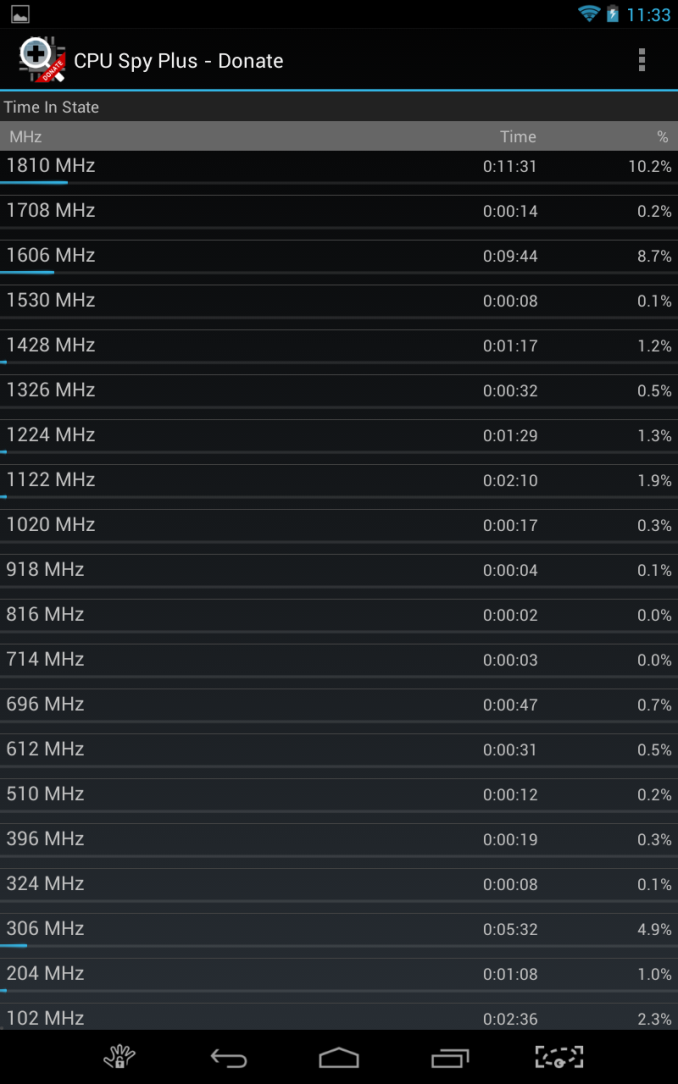
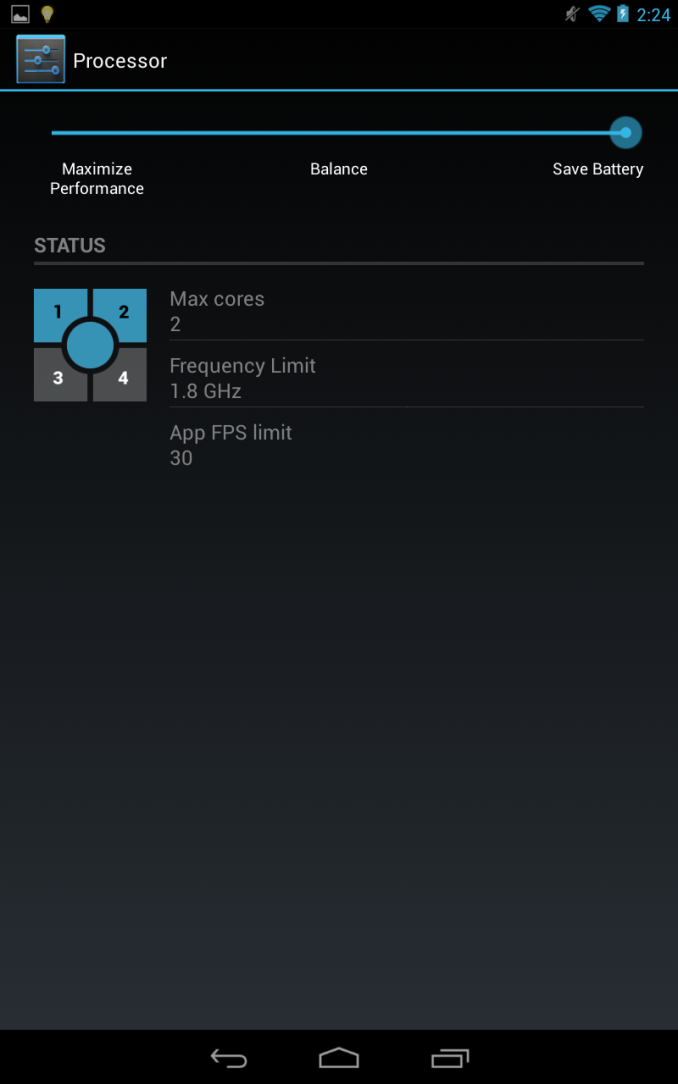








87 Comments
View All Comments
adityarjun - Tuesday, November 12, 2013 - link
Is the pen lag even less than the galaxy note 10.1 2014 and the Microsoft surface pro 2? (I know they are in completely different price ranges but i want to compare)And i am quite surprised that the stylus has less lag than note 3? That is a very costly device. And it doesn't fell laggy at all.
zodiacsoulmate - Tuesday, November 12, 2013 - link
i think on my surface pro the pen lag is not bad considering pressure level sensitivity and the huge canvas and brushes i use. Taking note in onenote is awesome, although onenote is having hard time syncing a large print out document(no idea why). hover is critical when painting. Wacom layer is accurate if calibrated correctly, but it's basically impossible on the edges and corners. i'm using 300 point self calib , it's still very very bad on edge and corners. but for note taking it's good enough.althaz - Tuesday, November 12, 2013 - link
Surface Pro 2 is much better around the edges and corners, just FYI :).newandroidfan - Tuesday, November 12, 2013 - link
This EVGA Nvidia Note 7 tablet is a killer!! Check out the full review right here!! http://goo.gl/mMaaiAethanolson - Tuesday, March 4, 2014 - link
This tablet is the same one as the HP Slate7 Extreme. Well... the back is different. Everything else is the same, even the speaker grill.Mr smurf - Wednesday, November 13, 2013 - link
I read in another article that the tegra note actually has a fifth core in its processor clocked at about 800mhz which is designed specifically for the pen and it also looks for where the pen is on the screen about 300 times a second making it amazingly smoothYojimbo - Friday, November 15, 2013 - link
a fifth core is standard in the tegra 4 line, it's a low-power core intended to save battery life while doing basic tasks by allowing the other cores to be shut off. This Anandtech article says that NVidia is using that low power companion core to also process the stylus input, although from my recollection, the author listed the frequency of the core at something around 670MHz.adityarjun - Tuesday, November 12, 2013 - link
All in all which would be the best options for note taking (keeping in mind that larger screen is a plus but more weight is a minus)- note 10.1 2014, surface pro 2, this, or an ipad with an external stylus like wacom bamboo?GrzegorzWidla - Tuesday, November 12, 2013 - link
If you are serious about your notes, Surface Pro 2 hands down.retrospooty - Tuesday, November 12, 2013 - link
I thought that... Then I saw a Lenovo Yoga 2 Pro in a best buy. Really nice alternative...